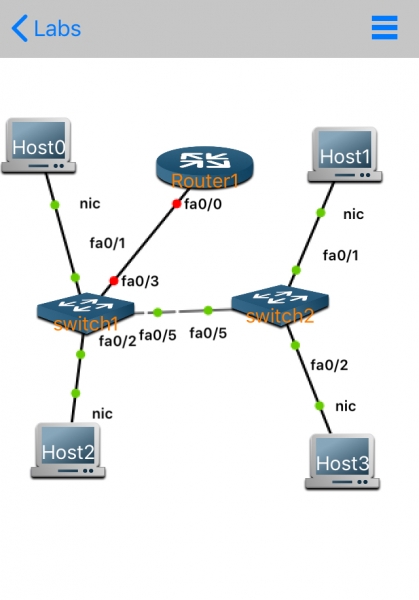Port Security - verification
October 1, 2020 - Reading time: 2 minutes
On our last tutorial we configured port security on a switch, let’s verify the configuration:
switch0#show port-security

Port Security - configuration
September 4, 2020 - Reading time: 3 minutes
In this tutorial, we shall look at port security and how it is configured. Port security is a security feature on Cisco Catalyst Switches that is configured to restrict input to an interface by limiting or assigning particular MAC addresses of hosts that are allowed to access the port. When port security is configured on a particular port, it allows access for only allowed MAC address(es) on the port. Any unauthorized MAC address that connects to the port cannot access network resources.
Configuring Port Security
In this tutorial, we shall use the topology below to configure port security on our switch.

VLAN Trunking Protocol
December 20, 2019 - Reading time: 3 minutes
VTP is a protocol that lets your switches share the same VLAN list, so you don’t have to create VLANs on every switch one by one. Switches that are in the same VTP domain (a name you choose) exchange this VLAN list across a trunk link (a link that carries traffic for many VLANs at once). On a server switch you add or rename VLANs; client switches automatically copy and stay in sync with that list. A transparent switch simply passes the VTP messages along but keeps its own local VLAN list separate. VTP itself doesn’t carry user traffic—it only keeps the VLAN database consistent across the network. In this lab, you’ll set one switch as a server, one as a client, build a trunk, and confirm the client learns the server’s VLANs.
PocketCLI Tutorial - Router on a Stick
June 13, 2019 - Reading time: 3 minutes
In our last two tutorials we looked at VLANs and Trunking, where we created two VLANs on two switches and linked them with a trunk port. At the end of that tutorial, the VLANs of same ID were able to communicate across the two switches. In this tutorial, we shall look at how the different VLANs can communicate, known as Inter-VLAN routing, by configuring Router on a stick.
In this tutorial, we shall add a router to the previous topology, as seen below:

PocketCLI Tutorial - VLANs and Trunking
May 28, 2019 - Reading time: 3 minutes
In the previous tutorial, we looked at how to create VLANs, assign ports to VLANs, and how to delete VLANs, all on one switch. In this tutorial, we shall look at how to configure VLANs on multiple switches, and how same VLANs on different switches can communicate; introducing a term known as Trunking.
In this tutorial, we shall create a lab in the Pocket CLI App to configure VLANs on two switches. Required devices for this lab are two Switches and four Hosts.

PocketCLI Tutorial - VLAN Configurations
May 15, 2019 - Reading time: 3 minutes
In this tutorial, we shall look at Virtual LANs (VLANs). VLANs are logical grouping of devices in the same broadcast domain. VLANs are usually configured on switches by placing some interfaces into one broadcast domain and some interfaces into another. A VLAN acts like a physical LAN, but it allows hosts to be grouped together in the same broadcast domain even if they are not connected to the same switch. They can be spread across multiple switches, with each VLAN being treated as its own broadcast domain. By default, all ports on a switch belong to the default VLAN, VLAN 1.
In this tutorial, we will create a simple Lab in the Pocket CLI App to configure VLAN on a switch. Devices we’ll use in this Lab are 1 Switch, and 4 Hosts. To setup this Lab:
- Tap on design on the main menu of the App.

Read more